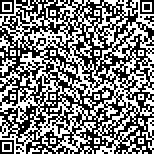Archive > Volume 46 Issue 9 > 2020,46(9):1178-1188. DOI:10.7519/j.issn.1000-0526.2020.09.005 Prev Next
Meteorological Field Experiment and Preliminary Analysis Result in the Winter Olympic Venue in Xiaohaituo Mountain
- Article
- Figures
- Metrics
- Preview PDF
- Reference
- Related
- Cited by
- Materials
Abstract:
From January to March 2017, we carried out an integrated field experiment in complex terrain of Winter Olympic Venue in Xiaohaituo Mountain of Beijing. The observation network consisted of 7 auto-matic weather stations (AWSs), 17 HOBO temperature and humidity data-loggers and 2 comprehensive super stations. During the 7 d intensive observing period (IOP), GPS radiosondes were launched every three hours. In this paper, the temperature profiles based on AWSs and HOBOs are compared with radio sounding temperature profiles. Based on the data of IOP, the characteristics of mid-mountain clouds (MMC) that have critical negative effects on alpine skiing are preliminarily analyzed. The results show that when MMC occurs, there are diurnal variations in surface wind direction. MMC tends to occur between 1 〖KG-*5〗100 m and 1 〖KG-*5〗700 m above ASL, shown up as a saturated moisture layer by radio soundings. In general, the top of MMC is at same height of the bottom of inversion layer, below which MMC exists. During nighttime, affected by downslope winds and down-valley winds, wind directions are more northwesterly or westerly below MMC. Inside MMC, winds blow more easterly or southeasterly at lower speeds through the day. Above MMC and inversions, westerly or northwesterly winds are obvious. Leeward subsidence-induced inversions and easterly moisture transportation in large scope could be the main causes for the MMC in Xiaohaituo Mountain.
Keywords:
Project Supported:
Clc Number:


Mobile website









